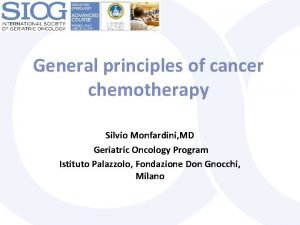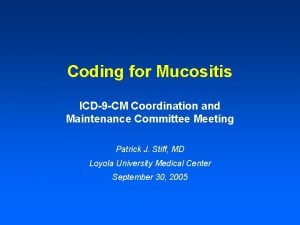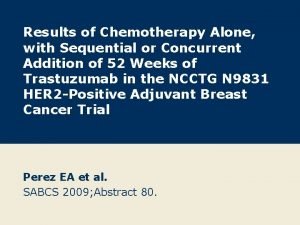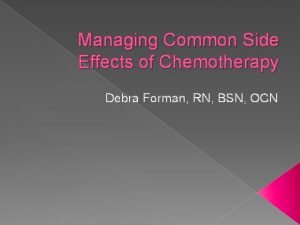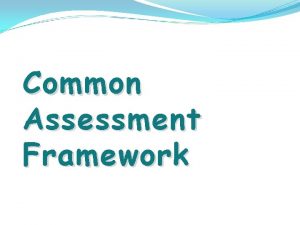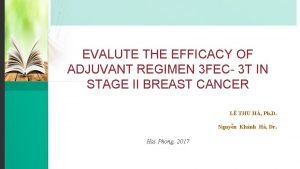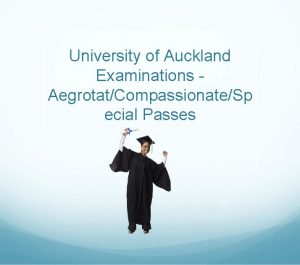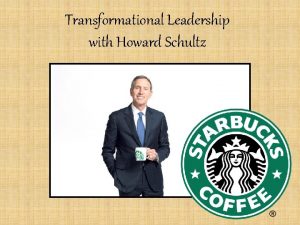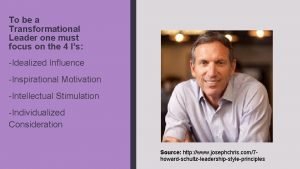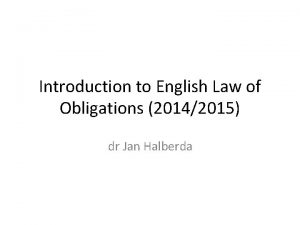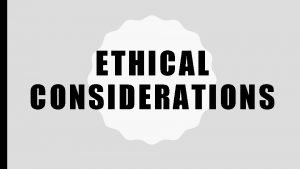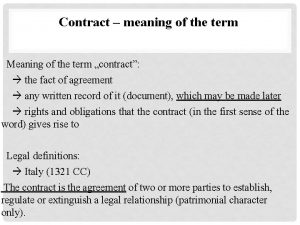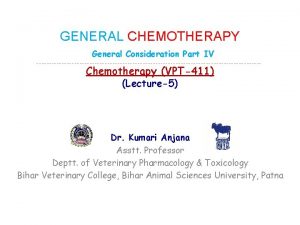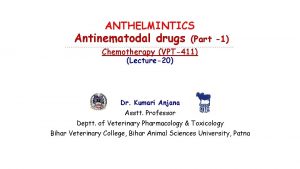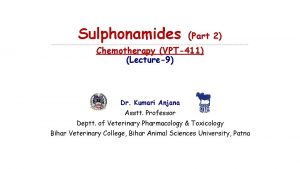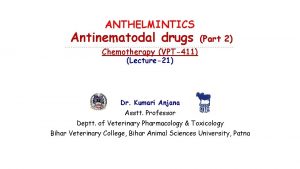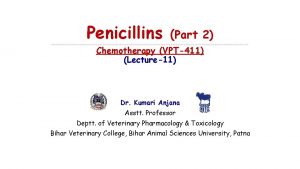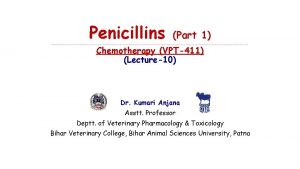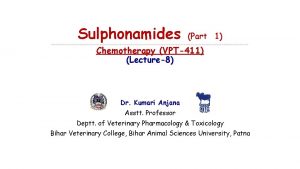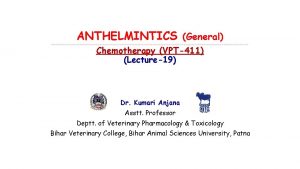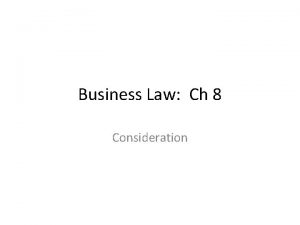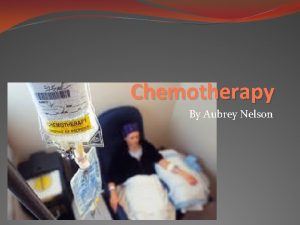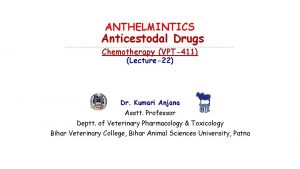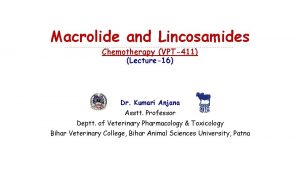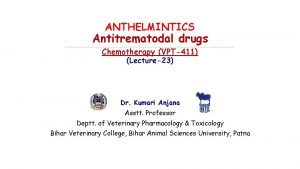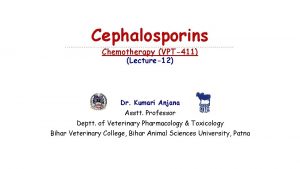GENERAL CHEMOTHERAPY General Consideration Part II Chemotherapy VPT411















- Slides: 15

GENERAL CHEMOTHERAPY General Consideration Part II ……………………………………………………………………………………………………………………… Chemotherapy (VPT-411) (Lecture-3) Dr. Kumari Anjana Asstt. Professor Deptt. of Veterinary Pharmacology & Toxicology Bihar Veterinary College, Bihar Animal Sciences University, Patna

Content of the chapter History • The period of empirical use • Ehrlich’s phase (1890 -1935) • The modern era of chemotherapy

History • The history of chemotherapy may be divided into 3 phases: • The period of empirical use • Ehrlich’s phase of drugs and organometllic compounds (1890 -1935) • The modern era of chemotherapy

Pre Ehrlich periods/The period of empirical use • In this period some compounds were used empirically to treat different diseases. Sometimes adverse effects were also monitored due to empirical use of the compounds. • ‘Mouldy curd’ by Chinese on boils, • Chaulmoogra oil by Hindus in leprosy, • Chenopodium by Aztecs for intestinal worms, • Mercury by Paracelsus (16 th century) for syphilis • Cinchona bark (17 th century) for fevers.

Ehrlich’s phase of dyes and organometallic compounds (1890 -1935) • Discovery of microbes in the later half of 19 th century and that they are the cause of many diseases. • Ehrlich toyed with the idea that if certain dyes could selectively stain microbes, they could also be selectively toxic to these organisms, and tried methylene blue, trypan red etc. Fig: Paul Ehrlich Source : Google image

• Ehrlich called such compounds "Magic bullets". • For therapeutic utility of compounds he introduced the term "chemotherapeutic Index", a ratio of maximum tolerated dose of a drug to its minimum curative dose. • Further, the term chemotherapeutic index, a ratio of LD 50 to ED 50. was replaced by • Ehrlich expressed an idea that cell membrane contains chemical groups or 'receptor' which with essential materials like oxygen and caused their up take by cells.

• He told that chemicals contain two groups-one group attach to the cell receptor (haptophore) and another group which caused specific pharmacological effect or toxic effect (toxophore). • It is his idea that a drug can produce curative or toxic effect depending upon its affinity for the parasite or host. • Therefore, a compound which has high affinity for the host tissue (organotropic) may be toxic. • Where as, if the compound has high affinity for parasite (parasitotropic) may be curative. • Based on the above hypothesis, Ehrlich introduced arsephenamine, the first really effective chemotherapeutic agent in man, for the treatment of syphilis.

• Developed Arsenicals-Atoxyl for sleeping-sickness, Arsphenamine in 1906 and Neoarsphenamine in 1909 for syphilis. • Father of chemotherapy • He coined the term ‘chemotherapy’ because he used drugs of known chemical structure and showed that selective attenuation of infecting parasite was a practical proposition. • Awarded Nobel Prize in 1908 in medicine.

The modern era of chemotherapy • Domagk, Mietsch and co-workers in 1935 by demonstrating therapeutic effect of prontosil, a sulfonamide dye, in pyogenic infection. • It was soon realized that the active moiety was paraamino benzene sulfonamide, and dye part was not essential. • Sulfapyridine (M&B 693)-first sulfonamide to be marketed in 1938. Fig: Domagk Source : Google image

• Nitti, Bovet and Fuller are also known as trefuel brothers, pointed that prontosil produce its therapeutic efficacy to its conversion into sulfanilamide in the body. • Since then a variety of synthesized. sulphonamides have been • Though, sulfonamide was prepared by Gelmo in 1908, but years passed before its therapeutic value was discovered.

• Antibiosis : The phenomenon of antibiosis was demonstrated by Pasteur and Jobert in 1877 : growth of anthrax bacilli in urine was inhibited by air born bacteria. • Babes in 1885, using culture media, established that one bacterium could elaborate a substance that would stop the growth of another. • Emmerich and Low in 1889, while working on the organism pseudomonas aeruginosa discovered that extract of this organism in high dilution could destroy a variety of pathogenic cocci as well as diphtheria, cholera, typhoid and plague organisms.

• Sir Alexander Fleming (1929) while working on Staphylococcal varients found that a diffusible substance was elaborated by penicillium mould which could destroy staphylococcus on the culture plate. • He named this substance penicillin but could not purify it. • Chain and Florey followed up this observation in 1939 which culminated in the clinical use of penicillin in 1941. • Because of the great potential of this discovery in treating war wounds, commercial manufacture of penicillin soon started.

• 1940 s Waksman and his colleagues undertook a systematic search of Actinomycetes as source of antibiotics and discovered streptomycin in 1944. • In 1944, streptomycin was reported by Schatz, Bugie and Waksman from Steptomyces griseus waksman defined 'antibiotic' as a chemical substance produced by micro-organisms having property of inhibiting the growth or destroying other micro-organisms in high dilution. • The streptomycin was found effective against many gramnegative micro organisms and Mycobacterium tuberculosis.

• Actinomycetes - treasure-house of antibiotics. • Tetracyclines, chloramphenicol, erythromycin and many other followed. • Domagk, Fleming-chain-Florey Waksman Noble prize

Thank You
 General principles of chemotherapy
General principles of chemotherapy Bsa calculation formula for chemotherapy
Bsa calculation formula for chemotherapy Icd 9 code for aphthous ulcer
Icd 9 code for aphthous ulcer Principles of chemotherapy
Principles of chemotherapy Chemotherapy
Chemotherapy Debra forman
Debra forman Common assessment framework 2021
Common assessment framework 2021 4ac 4t chemotherapy
4ac 4t chemotherapy What are the general considerations in machine design?
What are the general considerations in machine design? Uoa compassionate consideration
Uoa compassionate consideration Howard schultz transformational leadership
Howard schultz transformational leadership Individualized consideration
Individualized consideration Idealized influence meaning
Idealized influence meaning Stilk v myrick consideration
Stilk v myrick consideration Moral consideration in ethics
Moral consideration in ethics Consideration meaning in law
Consideration meaning in law
